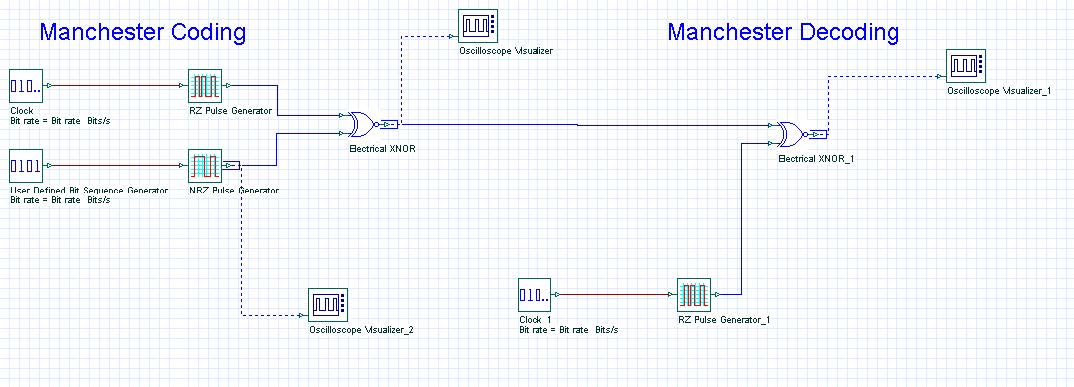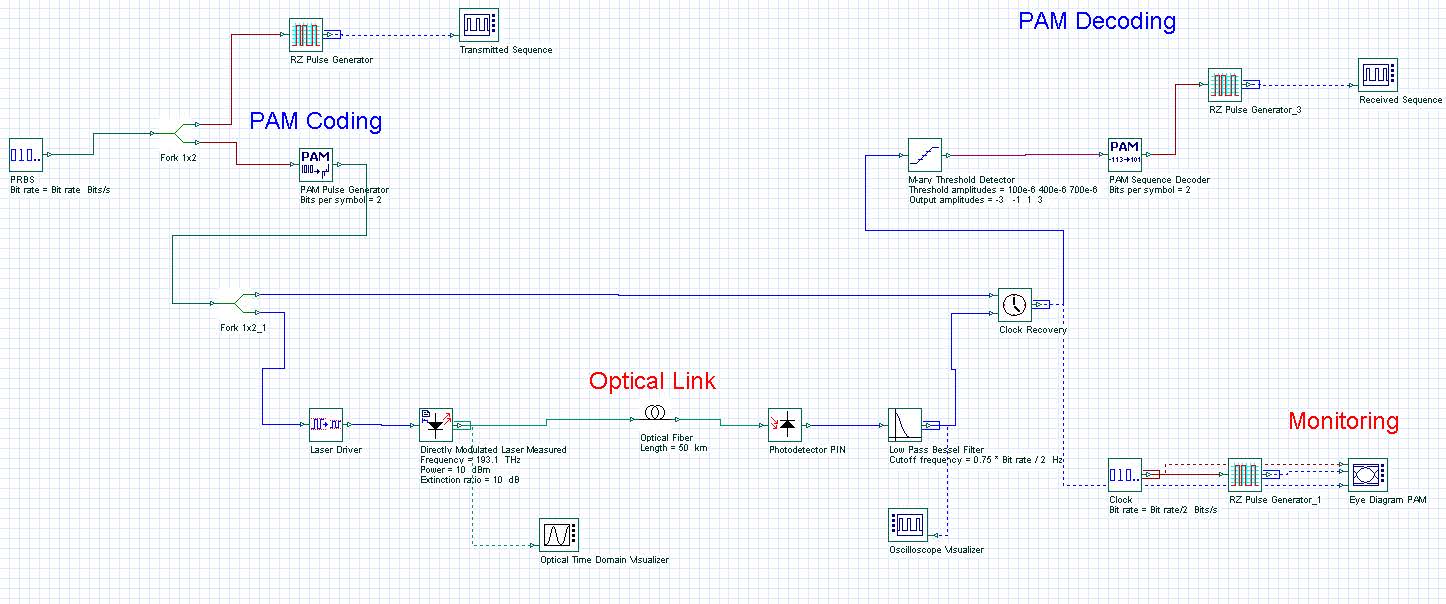A Manchester encoded signal contains frequent level transitions which allow the receiver to extract the clock signal and correctly decode the value and timing of each bit. To allow reliable operation, the transmitted bit stream must contain a high density of bit transitions. Manchester encoding ensures this, allowing the receiving to correctly extract the clock signal. Projects Manchester Coding – Decoding.osd and Manchester – Fiber Link.osd (Figure 1) demonstrate the usage of this type of coding. Project PAM – Fiber Link.osd demonstrates the bipolar non-return-to-zero scheme that is known as pulse amplitude modulation or PAM (Figure 2).
Figure 1: Machester coding and decoding.
Figure 2: PAM coding and decoding.



